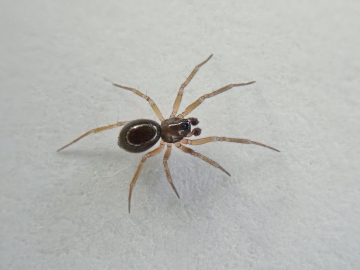Summary for Agyneta mollis (Araneae)
previous species | next species
National Distribution
Terms of Use. Double-click on map to go to region

Explore Regional Distribution
Please log on and add a note on this species
About this species
Recorded altitude range4m to 240m
Species text
DistributionThe species is widespread in southern central and eastern England and very scattered as far north as Yorkshire, but there are no modern records west of Somerset and few records in Wales. It is widespread in north-western and central Europe, but has not been recorded from Denmark or Norway.
Habitat and ecology
Duffey (1956) found M. mollis to be quite locally abundant in limestone grassland in Oxfordshire. The peak density of the spider was found to be in November, although adults could be found between September and April. Based on a small number of observations, Duffey (1956) found that a spring dispersal phase was most likely. In central Europe, the spider seems to be commonest in most types of, particularly damp, grassland and wet woodland (Hänggi et al. 1995). The picture may be slightly different in Britain, with most records from grassland but some from woodland. Our data show records of adults throughout the year, but with a peak in autumn/early winter.
Status
UK Biodiversity Action Plan priority species. It was added to the UKBAP in the 2007 review because of evidence suggesting a substantial decline. The species is very local and scarce, but may be numerous at some sites. There has been a significant decline in area of occupancy since 1992.
Threats
Threats are likely to include the loss and improvement of old grasslands.
Management and conservation
Low level grazing of grasslands is probably necessary at many sites to maintain structural diversity and prevent seral succession.
Text based on Dawson, I.K., Harvey, P.R., Merrett, P. & Russell-Smith, A.R. (in prep.). References
Adult Season
Habitats
background methodology
Recorded management for locations with Agyneta mollis
Recorded substrate and hydrology for locations with Agyneta mollis
Images
please log on and upload a new image for this speciesSee also A-Z Species Index - A-Z Picture Index - previous species | next species

